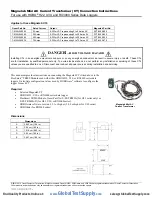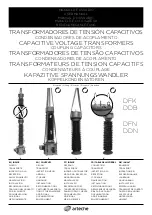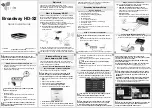
THEORY OF OPERATION
This PLL - controlled VHF marine transceiver provides an accurate and stable multi-channel operation.
The transceiver consists of 8 main sections:
Transmitter
Receiver
Low voltage detection
Voice recorder
Local oscillator PLL (Phase Lock Loop) Circuit
Memory backup
Bluetooth
ATIS(Automatic Transmitter Identification System) Only for HH475Eu
Transmitter
The audio is picked up from the internal MIC, the audio signal is then amplified by Audio Amplifier, U4
LM324 (2/4), U4 (3/4) and filtered by a low pass filter U4 (4/4). The audio is adjusted with VR2 to obtain a
suitable Audio frequency response, and then modulated with the carrier by VCO, through Varicap (D11).
The modulated signal output from the VCO is pre-amplified by Q5, Q4 and Q3. Then it is amplified by Q12,
Q6 .The amplified signal then passes through a low -pass filter network which consists of C72, L8, C66,
C15, L6, C4 filters out spurious emission, and the antenna switching circuit, D1, D2. The signal is filtered
by another low-pass filter circuit which consists of C16, L2, C62, C12, L1, C5, C1. These low pass filters
are necessary to suppress the second and third harmonics. The signal is then fed into the antenna input
and radiated out.
TX current is converted into a voltage signal, that signal fed into U2 LM2904 (2/2) for sampling. U2 is the
Automatic power control (APC) circuit.
When the unit is transmitting, the audio signal is added to the TX VCO Varicap D11. The capacitance of
D11 is varied following the audio signal and when mixed with the carrier to form the modulated signal.
Receiver
The receiver uses a double frequency super-heterodyne circuit. The first Immediate Frequency (IF) is 21.4
MHz and the second is 450 kHz.
The RF signal is received by the antenna, and passes through a low-pass filter network C1, L1, C5, C12,
L2, C62, C16, C20, L7, C67 to filter out the unwanted signals, the antenna switching circuit D1, D2
switching circuit to receive. The received RF signal is sent to a SAW filter F1 to filter out-of-band signals.
The RF amplifier Q7 amplifies signals within the range of the frequency coverage and passes though
another saw filter F2 to further filter out-of-band signals. The RF signal then is mixed with the local
oscillation frequency by the mixer Q8. A first IF (Immediate Frequency) 21.4 MHz is produced. The IF is
passed through a pair of crystal filter F3 (1/2), F4 (2/2) to further filter other unwanted signals. The first IF
4
Summary of Contents for MR HH475 FLT BT
Page 11: ...WIRING DIAGRAM 11 ...
Page 12: ...PRINTED CIRCUIT BOARD Main PCB Top View VR2 VC1 12 ...
Page 13: ...PRINTED CIRCUIT BOARD Main PCB Bottom View L18 L20 13 ...
Page 14: ...PRINTED CIRCUIT BOARD Cradle Charger PCB View Top View Bottom View 14 ...
Page 16: ...EXPLODED VIEW for HH475 Main Part 16 ...
Page 17: ...EXPLODED VIEW for Battery and Antenna 17 ...
Page 54: ...U4 U5 324 NJM V 54 ...
Page 60: ...U401 HT1621 DICE 60 ...





































